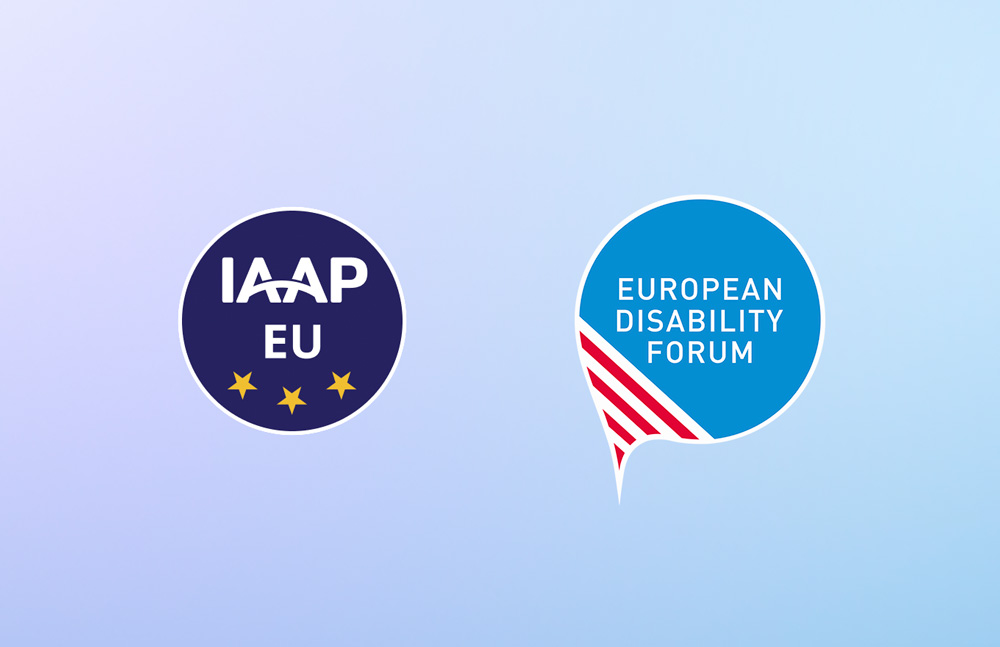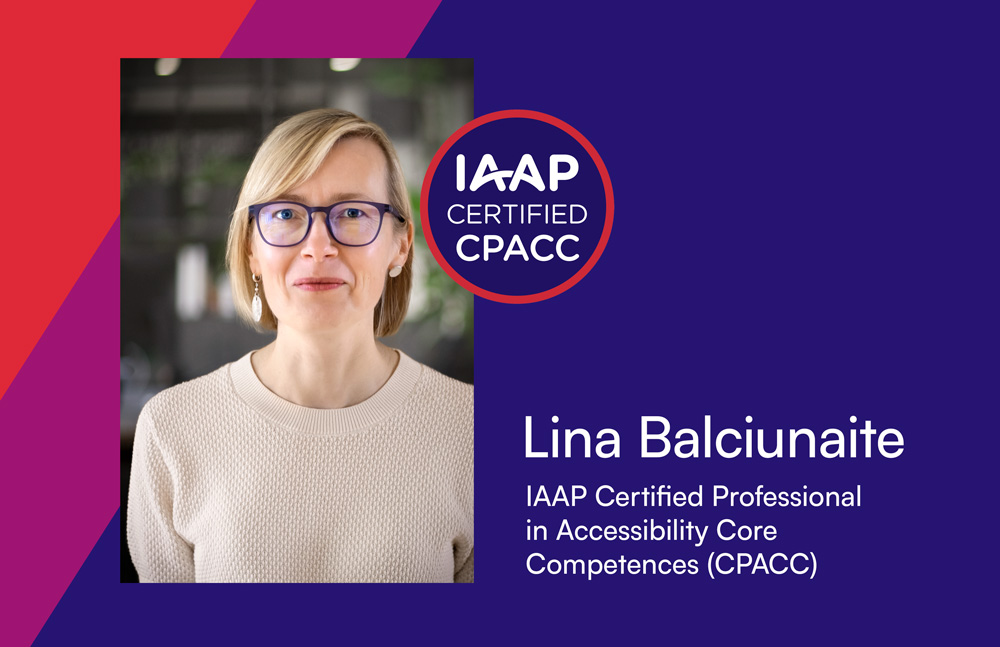Exploring the Accessibility Features of Popular Web Browsers

In today's digital age, web browsers are an essential tool for accessing the vast expanse of information available on the internet. However, not everyone has the same level of ability when it comes to using web browsers, which is why it's crucial for browsers to offer accessibility features that make web content easier to navigate for everyone.
Along with built-in accessibility features, browser extensions and addons offer additional solutions for enhancing web accessibility. In this blog post, we'll explore various accessibility features and extensions available on some of the most popular web browsers.
Google Chrome
Built-in accessibility features in Chrome
Google Chrome is one of the most widely used web browsers, and it comes packed with valuable accessibility features to help users with disabilities. One of the most prominent features is built-in live captions for audio and video, which can be enabled by navigating to Chrome's settings and selecting the Accessibility section. Additionally, Chrome offers a high-contrast mode, allows users to change the text size and zoom level to their liking, show a quick highlight on the focused object, and navigate pages with a text cursor.
Extensions for Chrome
- Text-to-speech reader by Read me – Provides text-to-speech functionality for web pages, PDFs and eBooks with natural sounding voices.
- SwiftRead – Allows users to read and absorb information more quickly. SwiftRead can be helpful for individuals with dyslexia, ADHD, or other learning disabilities who may struggle with reading at a slower pace.
- EasyReader – Provides a clean and distraction-free reading experience with features for adjusting the font, size, and color of text, as well as text-to-speech functionality.
- Volume Master – Allows users to easily control and adjust the volume of individual tabs in the browser. Boosts volume up to 600%.
- Dark Reader – Applies a dark theme to websites, and offers customizable settings to adjust brightness and contrast levels. Provides several filters, such as grayscale, inverted colors, and high contrast mode, that can be applied to specific websites or globally.
Extensions for Chrome can be found in the Chrome Web Store. To access the store, simply open your Chrome browser, click on the three dots in the top right corner, and select "More tools" > "Extensions." From there, you can browse through the various extensions available and install the ones that suit your needs.
Mozilla Firefox
Built-in accessibility features in Firefox
Mozilla Firefox also offers various adjustments for improved accessibility. It includes a "Reader View" feature, which strips away clutter from web pages, making them easier to read for users with visual impairments. Additionally, Firefox allows users to change the font size, color, and background color of web pages, making it more comfortable for users with low vision to read content.
Extensions for Firefox
- Read Aloud: A Text to Speech Voice Reader – This extension reads selected text or entire web pages aloud using a variety of voices and languages. It includes features for adjusting the speed and volume of the speech, as well as a highlighter that follows along with the text as it is read aloud.
- Dark Reader – Applies a dark theme to websites, and offers customizable settings to adjust brightness and contrast levels. Provides several filters, such as grayscale, inverted colors, and high contrast mode, that can be applied to specific websites or globally.
- Tranquility Reader – Improves the readability of web articles by removing unnecessary elements like ads, images, social sharing widgets, and other distracting fluff.
- Zoom Page WE – Allows to zoom web pages (either per-site or per-tab) using full-page zoom, text-only zoom and minimum font size.
- OpenDyslexic – Overrides all fonts on web pages with the OpenDyslexic font, and formats pages to be more easily readable.
Extensions for Mozilla Firefox can be found in the Firefox Add-ons store. To access the store, open your Firefox browser, click on the three horizontal lines in the top right corner, and select "Add-ons and themes" from the dropdown menu. From there, you can browse through the various extensions available and install the ones that suit your needs.
Safari
Built-in accessibility features in Safari
Safari, the default web browser on macOS and iOS devices, offers several accessibility features that can make web browsing easier for users with disabilities. It includes a high-contrast mode, which can make it easier for users to distinguish text from the background. Additionally, Safari offers customizable keyboard shortcuts, which can help users with physical disabilities navigate the browser more easily.
Extensions for Safari
- Noir - Dark Mode for Safari – Automatically adds a dark mode to every website a user visits.
- Dark Reader – Applies a dark theme to websites, and offers customizable settings to adjust brightness and contrast levels. Provides several filters, such as grayscale, inverted colors, and high contrast mode, that can be applied to specific websites or globally.
- Hyperweb – Suggests enhancements automatically as user browses, blocking annoyances and suggesting smart alternatives.
Extensions for Safari can be found in the Mac App Store. To access the extensions, open Safari on your Mac and click on "Safari" in the top menu bar. From there, choose "Safari Extensions." This will take you to the Mac App Store, where you can browse through the various extensions available and install the ones that suit your needs.
By the way, some Safari extensions may require payment. It depends on the specific extension and its developer. You can check the price of an extension on the Safari Extension Gallery or the Mac App Store before downloading it.
Opera
Built-in accessibility features in Opera
Opera browser provides several built-in accessibility features that make web browsing easier for users with disabilities. These include customizable color schemes and font sizes, built-in live captions, highlight on the focused object, and high contrast mode. These features help users with visual impairments, dyslexia, color blindness, and attention-related disorders to access web content more easily.
Extensions for Opera
- Reader View – Strips clutters from webpages and read them on "Reader View" mode.
- Fix Contrast – Increases contrast and saturation to make web content easier to read for users with low vision or color blindness.
- Text-to-Speech – Reads web content aloud for users with visual impairments or reading difficulties.
- Zoom – Allows users to zoom in and out of web content to make it easier to read. Has an option to see the circle or square magnifying glass around the mouse cursor.
- Volume up – Increase the volume of audio or videos up to 600%.
Extensions for Opera can be found in the Opera Add-ons store. To access the extensions, open Opera and click on the three vertical dots in the top right corner of the browser. From there, select "Extensions" and then click on "Go to Opera Add-ons." This will take you to the Opera Add-ons store, where you can browse through the various extensions available and install the ones that suit your needs.
Microsoft Edge
Built-in accessibility features in Edge
Microsoft Edge, the default browser on Windows 10, also includes several accessibility features that can help users with disabilities navigate the web more easily. Edge offers an "Immersive Reader" feature, which can help improve the reading experience for users. It provides features such as text-to-speech, adjustable font sizes and spacing, and a focus mode that highlights and isolates text for easier reading.
In the "Accessibility" settings of the browser you can also enable options to show a high visibility outline around the area of focus on the page and an option to navigate pages with a text cursor.
Extensions for Edge
- Read&Write – Provides a variety of tools for users with dyslexia or other reading difficulties. It includes features for text-to-speech, highlighting, and simplifying complex text.
- Dark Reader – Applies a dark theme to websites, and offers customizable settings to adjust brightness and contrast levels. Provides several filters, such as grayscale, inverted colors, and high contrast mode, that can be applied to specific websites or globally.
- Screen Mask – Follows user's mouse or touch to help eliminate page distractions and help focus on reading one passage at a time.
- Font Changer – Allows users to change the font and size of text on web pages, making them easier to read for users with visual impairments.
- Easy Volume Booster – Increases audio volume above the maximum. Users can set up the default volume for a domain or just for a tab.
Extensions for Microsoft Edge can be found in the Microsoft Edge Add-ons store. To access the extensions, open Microsoft Edge and click on the three horizontal dots in the top right corner of the browser. From there, select "Extensions" and then click on "Get extensions from Microsoft Store." This will take you to the Microsoft Edge Add-ons store, where you can browse through the various extensions available and install the ones that suit your needs.
Availability of extensions across browsers and operating systems
When it comes to accessibility extensions, some may only be available on a specific browser, while others may be available on more than one. Moreover, certain extensions may only be compatible with specific operating systems. For instance, some extensions may work on Windows and macOS, but not on mobile devices such as Android or iOS.
It's always a good idea to check the compatibility of an extension or add-on with your specific browser and operating system before downloading and installing it. This information can typically be found on the extension or add-on's listing in the browser's marketplace or store.
Conclusion
Web browsers have come a long way in providing accessibility features to ensure equal access to web content. With built-in features, browser extensions, and addons, there are various tools available to enhance web accessibility for people with disabilities.
However, accessibility is an ongoing process, and there is always room for improvement. Developers must continue to prioritize accessibility to keep the internet inclusive for everyone.
Users with disabilities should explore these options to find what works best for them, enabling them to access the vast expanse of information available on the internet and optimize their browsing experience.
June / Karlove offers accessibility compliance, accessibility knowledge and culture, and accessible design and development services.
Schedule a discovery call to learn how to guarantee your company's digital products are accessible to individuals with disabilities.
Newsletter subscription
Twice a month we send insights, event updates, and valuable resources on best accessibility practices in Lithuania, the Baltics, and the EU market. Subscribe to get the latest knowledge and stay informed.




